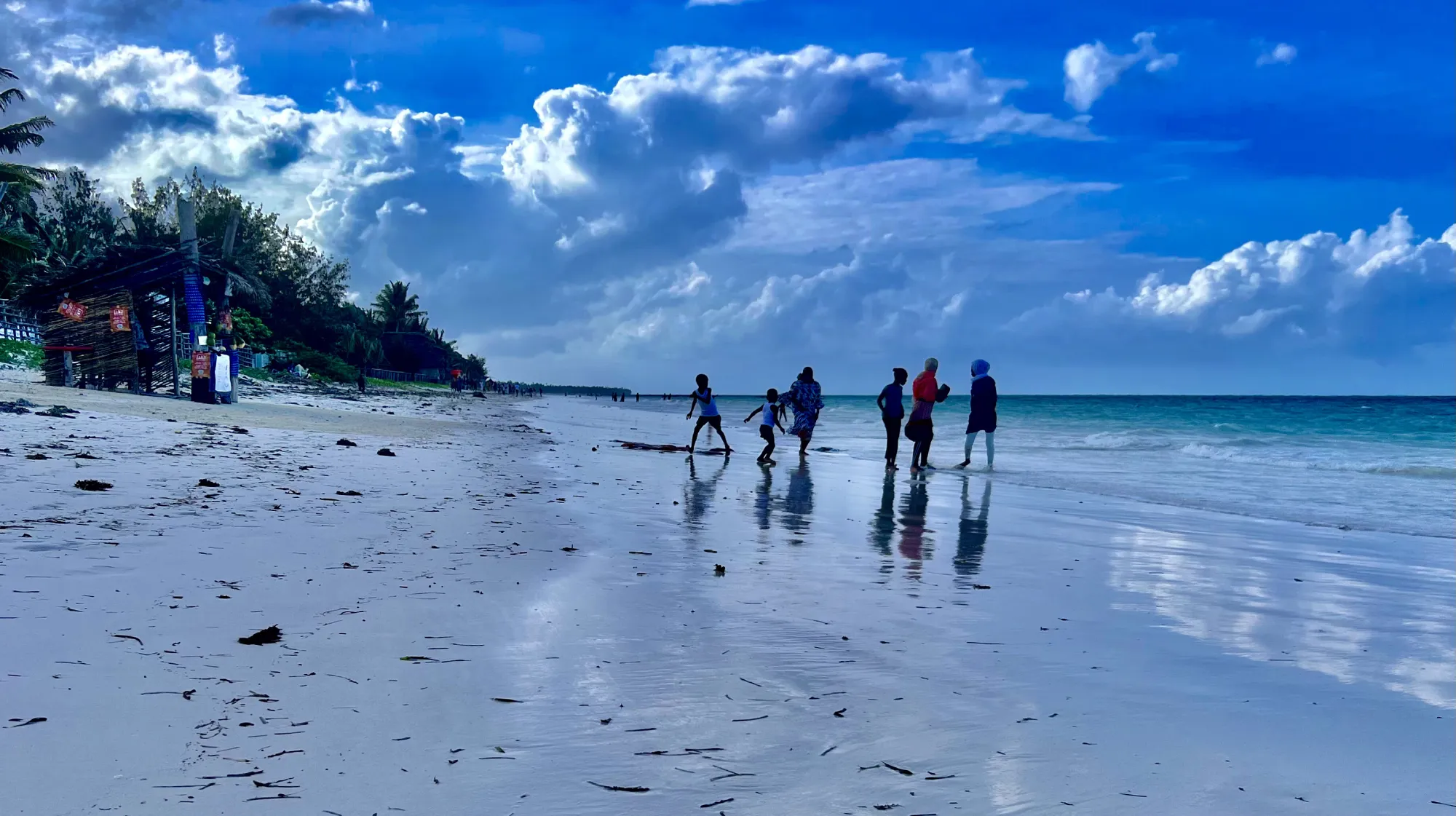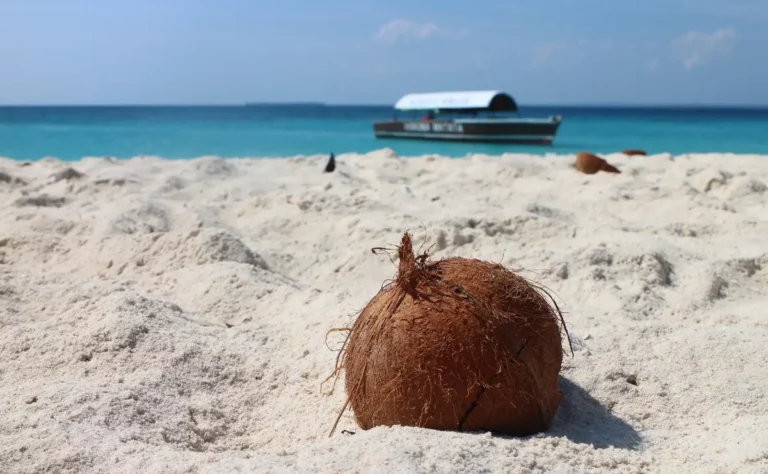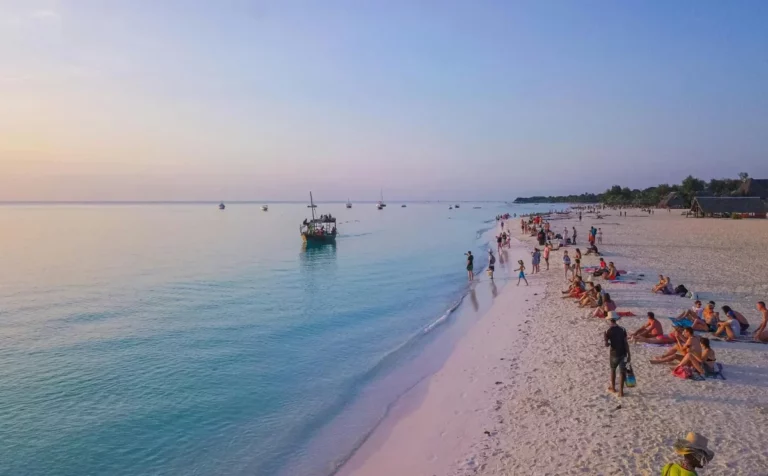The Best Time to Visit Zanzibar: 5 Insider Secrets for a Perfect Trip

Zanzibar is more than just an Indian Ocean paradise; it’s a destination where history and natural beauty converge to create an unforgettable experience. From spice-laden breezes dancing along centuries-old stone walls to white-sand beaches that meet vibrant coral reefs, Zanzibar offers a sensory feast steeped in rich Swahili culture, shaped by centuries of trade, religion, and migration. Choosing the right time to visit Zanzibar is crucial, as the seasonal variations not only influence the ambiance and weather but also have a significant impact on your budget.
When you plan your visit, you’ll notice that Zanzibar is a highly seasonal market. Prices for accommodations, tours, and flights fluctuate dramatically based on the time of year, reflecting the ebb and flow of global tourist demand. Peak seasons, marked by pristine weather and bustling festivals, tend to command premium prices, while the off-peak and shoulder periods offer excellent deals and a more intimate glimpse into island life.
Whether you’re drawn to the iconic beaches of Unguja, the serene charm of Pemba, or the rich cultural tapestry revealed during local festivals, timing your trip right ensures that you maximize both your experience and your savings. This guide explores the seasonal nuances, so you can align your dream holiday with the perfect time to visit Zanzibar.
Table of Contents
Zanzibar’s Climate: What You Need to Know
Zanzibar lies just below the equator and enjoys a tropical monsoon climate with warm temperatures all year round. But it’s the rainfall patterns that truly shape your experience. The archipelago has two rainy seasons and two dry seasons, and each period comes with its pros and cons depending on what you want out of your trip. Average temperatures in Zanzibar range from 24°C (75°F) to 32°C (90°F), with coastal breezes helping keep things comfortable. Humidity levels can spike during the rainy months but are more tolerable in the dry season. While Unguja and Pemba share similar weather patterns, Pemba tends to be slightly cooler and wetter due to its denser vegetation and more elevated terrain.
Long Dry Season: June to October

The long dry season from June to October is considered the best time to visit Zanzibar. During these months, the skies are mostly cloudless, humidity drops, and temperatures hover around a pleasant 26°C to 28°C (79°F to 82°F). This is peak season for tourism, and for good reason. It’s the ideal time for snorkeling, diving, dhow sailing, or simply relaxing on world-famous beaches like Nungwi, Kendwa, and Matemwe.
Visibility in the ocean is at its clearest, making it perfect for exploring Zanzibar’s marine parks, coral reefs, and underwater shipwrecks. Unguja is bustling during this time, especially in July and August. In contrast, Pemba remains quieter and more serene, with equally stunning dive sites such as Misali Island and untouched stretches of coastline for those seeking seclusion. If you’re a nature lover, this is the best time to hike Jozani Forest or take a spice farm tour without worrying about downpours.
Short Dry Season: January to February
January and February are Zanzibar’s short dry season, and this two-month window is a sweet spot for many travelers. Temperatures rise slightly, often reaching 30°C to 33°C (86°F to 91°F), but the skies remain mostly clear. The ocean is bathwater-warm and calm—ideal for swimming, kiteboarding, and sunset cruises. These months are especially appealing to honeymooners and those looking to escape winter in the northern hemisphere. The island has a more laid-back vibe post-Christmas and New Year’s rush, and accommodation prices begin to dip compared to the June–October period. Pemba during this time is at its most lush and photogenic, offering a perfect balance of sunshine and green scenery.
Long Rains: March to May
The long rains, or Masika, last from mid-March to late May and bring Zanzibar’s heaviest and most sustained rainfall. Tropical downpours often arrive in the late afternoon or at night but can sometimes persist for days. This is the least popular time to visit Zanzibar, with good reason: roads can flood, some beach resorts close temporarily, and outdoor activities are frequently disrupted. However, there are advantages for the intrepid traveler.
This is by far the cheapest time to visit Zanzibar, with hotels slashing prices up to 50%. Flights are more affordable, and tourist sites are virtually empty. The vegetation is at its most vibrant, and photographers will love the deep greens and moody skies. Pemba, being naturally greener, becomes even more lush and misty. If you don’t mind the occasional deluge and want a quiet, low-cost escape, this off-season could work in your favor.
Short Rains: November to Mid-December

November and early December bring lighter rains, known as the Vuli. Showers are usually brief and fall in the early morning or late afternoon, rarely ruining an entire day. Temperatures remain high—around 30°C (86°F)—and the sea stays warm and inviting. This shoulder season is excellent for travelers looking to avoid the high-season crowds and prices while still enjoying good weather. The island is greener after the rains, the beaches are quieter, and the atmosphere is more relaxed. Many resorts offer promotional deals during this window, especially before the Christmas peak. Pemba in November is refreshingly cool and aromatic, with flourishing spice plantations and vibrant birdlife.
Comparing Unguja and Pemba: Differences in Best Times to Visit
Unguja, the main island, is more developed for tourism, with dozens of luxury resorts, budget hostels, restaurants, nightlife, and organized tours. Pemba, on the other hand, is less commercial, more rustic, and prized for its natural beauty and exclusivity. The dry season (June to October) is ideal for both islands, but while Unguja attracts larger crowds, Pemba remains peaceful even at peak times. Rainfall tends to be heavier and more frequent on Pemba due to its higher elevation and thicker forest cover. This makes the rainy seasons less travel-friendly on Pemba, but they also enhance its reputation as a lush, untouched retreat. In contrast, Unguja is more forgiving in the shoulder seasons, with better infrastructure to handle unpredictable weather.
Zanzibar’s Festival Calendar: When to Visit for Culture and Celebration
Timing your visit to coincide with a cultural festival can dramatically enrich your Zanzibar experience. Here are some of the top events to consider:
Sauti za Busara (February)

Held in the historic heart of Stone Town, this four-day music festival is one of East Africa’s most electrifying cultural events. The festival features a diverse array of performances by renowned African musicians, drawing thousands of visitors from around the globe to visit and experience its vibrant atmosphere. The energy is infectious as local and international artists come together to celebrate Africa’s musical heritage in a setting that is both stunning and steeped in history. With February’s short dry season weather offering ideal conditions for outdoor festivities, Sauti za Busara becomes the perfect occasion to enjoy live music under clear skies and create unforgettable memories in Zanzibar.
Mwaka Kogwa (Late July)
Held in the historic heart of Stone Town, this four-day music festival is one of East Africa’s most electrifying cultural events. The festival features a diverse array of performances by renowned African musicians, drawing thousands of visitors from around the globe to visit and experience its vibrant atmosphere. The energy is infectious as local and international artists come together to celebrate Africa’s musical heritage in a setting that is both stunning and steeped in history. With February’s short dry season weather offering ideal conditions for outdoor festivities, Sauti za Busara becomes the perfect occasion to enjoy live music under clear skies and create unforgettable memories in Zanzibar.
Zanzibar International Film Festival (June/July)
Also known as ZIFF, this celebrated film and arts festival is a vibrant showcase of Swahili culture, international cinema, and emerging local talent. Screenings, live performances, and interactive art installations are hosted in historic venues throughout Stone Town, offering visitors a unique blend of modern creativity and cultural heritage. Held during the dry season, ZIFF provides ideal weather for enjoying outdoor screenings and exploring the festival grounds. For art lovers and cinephiles, it’s one of the best times to visit Zanzibar, ensuring an immersive experience in a setting that perfectly marries history, art, and the island’s enchanting ambiance.
Eid al-Fitr and Eid al-Adha (Dates vary)
Zanzibar, with its majority Muslim population, celebrates Eid al-Fitr with deep cultural significance. Marking the end of Ramadan—a month of fasting and reflection—the festival begins with special congregational prayers at local mosques that reinforce community and spiritual bonds.
Following the prayers, families enjoy festive feasts featuring traditional dishes such as biryani, pilau, and sweet treats like mahamri and halwa, while new clothes symbolize renewal. In historic Stone Town, vibrant markets and lively street scenes offer visitors an immersive glimpse into Zanzibar’s rich heritage shaped by Arab, Persian, and African influences. When visiting during Eid, it’s essential to respect local customs while fully experiencing this cherished celebration.
Christmas and New Year’s (December)
The holiday season draws global tourists to Zanzibar’s shores, particularly to beach resorts in Nungwi and Kendwa, where vibrant celebrations and tropical festivities create an unforgettable atmosphere. During December, the island comes alive with live music, cultural performances, and special events that blend traditional Swahili customs with modern holiday cheer. Visitors can expect not only high prices and high demand but also high spirits, as festive fireworks light up the night sky and local vendors offer seasonal delicacies and handcrafted souvenirs. Many travelers choose to visit Zanzibar during this period to experience its unique blend of relaxation and celebration, so it’s essential to book early if you plan to spend the festive season on the island.
Price Trends: When to Visit Zanzibar for Budget Travel
Zanzibar is a highly seasonal destination, and the timing of your visit significantly influences your budget. Here’s an overview of how prices typically fluctuate:
High Season (June to October, mid-December to mid-January)

This is the peak travel period in Zanzibar, when the islands are bustling with activity and natural beauty is at its most captivating. During these months, demand surges for hotels, flights, and tours, which in turn drives prices to their highest levels—often 30–50% above those of the low season. This premium is especially noticeable for beachfront resorts and popular diving excursions, where securing a booking well in advance is essential to avoid disappointment. Many travelers choose to visit during this period to enjoy the exceptional weather and vibrant cultural events that create a unique, energetic atmosphere, drawing visitors from around the globe despite the increased costs.
Shoulder Seasons (January to February, November to early December)
These periods provide excellent value combined with pleasant weather conditions. During these times, hotel rates tend to drop slightly, making accommodations more affordable without sacrificing the chance to enjoy abundant sunshine and a full slate of activities. These periods are ideal for budget-conscious travelers who appreciate the benefits of quieter tourist crowds and easier availability in popular areas. They also offer a great opportunity to visit local attractions and experience the authentic charm of the region at a more relaxed pace, ensuring that every moment of your stay is filled with both comfort and discovery.
Low Season (March to May)

The rainy season in Zanzibar brings the best deals, as the island’s lush landscapes transform into a vibrant display of nature’s rejuvenation. Travelers can enjoy steep discounts on accommodations, particularly in areas like Stone Town and Paje, where rich cultural heritage and laid-back beach vibes offer a unique charm.
Although some tour operators may pause operations during heavy rainfall, many continue with reduced group sizes and lower rates, ensuring that visitors still get to explore the island at a more intimate pace. Additionally, flights from Europe and the Middle East tend to be cheaper during this period, making it an ideal time to visit Zanzibar for budget-savvy travelers who don’t want to miss out on the island’s hidden gems despite the occasional showers.
Month-by-Month Breakdown: When to Visit Zanzibar
- January offers hot, dry weather that’s perfect for sun-seekers and diving enthusiasts, with moderate crowds adding to a relaxed atmosphere.
- February brings warm and vibrant conditions, making it an ideal time to enjoy cultural events like Sauti za Busara, and prices are a bit lower than during the peak season.
- March sees the onset of rain mid-month, offering pleasant conditions in the early part while the later weeks bring wetter weather and lush, green scenery.
- April is the wettest month, perfect for travelers on a tight budget and those seeking a quiet escape away from the bustling tourist crowds.
- May continues with persistent rain that gradually tapers off, as the islands begin to reawaken with a burst of natural vitality.
- June marks the beginning of the long dry season, creating ideal conditions for lively festivals and memorable beach adventures.
- July is celebrated for its perfect weather during the peak season, so it’s wise to book ahead to secure accommodations and activities.
- August mirrors July with its sunny, festive atmosphere and an abundance of life, making it a prime time for outdoor enjoyment.
- September delights with excellent weather and fewer crowds, offering a more relaxed and enjoyable experience.
- October, as the dry season winds down, still treats visitors to warm, sunny days, providing a sweet spot for those seeking good value.
- November introduces short rains that make weather a bit less predictable, yet this month also offers attractive deals for the budget-conscious.
- December starts off quiet and affordable in its early days, though prices typically spike from mid-month onward as holiday celebrations begin.
Conclusion: So When Should You Visit Zanzibar?
If you’re chasing sunshine, dry skies, and perfect beach weather, the best time to visit Zanzibar is undoubtedly from June to October. During this dry season, temperatures often reach the high 80s°F (around 30°C), creating ideal conditions for diving, sailing, and sunbathing. The sea remains calm and crystal-clear, providing unparalleled opportunities to explore vibrant coral reefs and engage in a variety of water sports.
January and February offer another excellent window with fewer crowds, making them perfect for travelers who enjoy a more relaxed atmosphere and personalized experiences. These months also mark the tail end of the peak holiday season, so visitors can enjoy quieter beaches and exclusive resort rates. During this period, the island’s cultural vibrancy comes to life through festivals like Sauti za Busara, where East African music and art captivate audiences from around the world.
For cultural explorers, planning your trip around major festivals such as Sauti za Busara or Mwaka Kogwa can deepen your understanding of the local traditions. Mwaka Kogwa, with its centuries-old rituals and traditional ceremonies, offers a unique glimpse into the island’s rich heritage, complemented by traditional dances and music that bring the Swahili New Year to life.
For budget travelers, the green season from March to May presents unbeatable deals. Although these months bring intermittent rains, they transform the landscape into a lush, vibrant paradise. Just pack a reliable raincoat, and you’ll discover that even during the wet season, Zanzibar’s charm shines through with its rejuvenated flora and quieter tourist spots.
If you’re craving solitude and lush landscapes, consider exploring Pemba during the shoulder months. This quieter sister island to Zanzibar offers pristine beaches, exceptional diving spots, and a more intimate connection with local life, making it an ideal retreat for those seeking a hidden paradise away from the bustling main island.
Ultimately, the best time to visit Zanzibar depends on the kind of trip you’re after. Whether you’re drawn to the sun-drenched splendor of the dry season, the cultural richness of major festivals, or the budget-friendly opportunities during the green season, every period offers its own extraordinary experiences.


